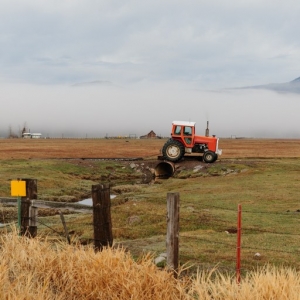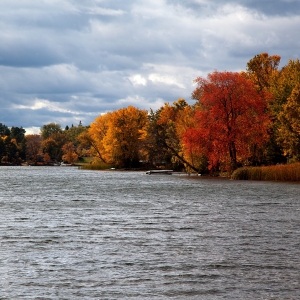Federal Water Tap, December 13: Jet Fuel Leak Contaminates Water on Oahu Naval Base
The Rundown
- The FDA, in an overhaul of food safety rules, proposes eliminating an irrigation water testing requirement in favor of farm-wide assessments.
- A pipeline company faces criminal penalties after spilling 29 million gallons of oilfield wastewater in North Dakota.
- An executive order requires federal agencies to establish energy and water conservation
- A fuel leak at a naval base on Oahu contaminates the base’s drinking water.
And lastly, the Defense Department updated Congress on its PFAS cleanup process.
“We estimate the future cost will exceed $2 billion. And frankly, we expect that this amount will further increase as we continue with the cleanup investigations and have a better understanding of the challenges we face.” — Richard Kidd, deputy assistant secretary for Environment and Energy Resilience at the U.S. Department of Defense, testifying before the Senate Committee on Homeland Security and Governmental Affairs. Kidd was referring to the Defense Department’s PFAS cleanup obligations. The department identified 699 installations that could have released the toxic chemicals into the environment. As of September 30, the department had completed assessments at only 190 of the installations. Seventy-five of the sites were cleared. The department plans to complete assessments at the remaining sites by September 30, 2023.
By the Numbers
$15 Million: Criminal fine that Summit Midstream Partners LLC will pay after being found guilty of violating the Clean Water Act for spilling 29 million gallons of oilfield wastewater. The incident began in 2014 in North Dakota and continued for five months. Summit agreed that its failure to stop the leak was due to negligence. As part of the sentencing, Summit will be subjected to a three-year probation. The company already paid a $20 million civil fine.
39: Number of utilities that the U.S. Environmental Protection Agency selected to apply for $6.7 billion in low-interest loans through the WIFIA program. The projects are mostly large water, sewer, and stormwater developments.
News Briefs
E. Coli and Your Lettuce
The Food and Drug Administration is proposing changes to federal food safety requirements for ensuring that irrigation water does not contaminate crops.
The changes would eliminate a requirement to test irrigation water for microbial contaminants. Farms instead would undertake broad “water assessments” that evaluate and address potential contaminant sources farm-wide.
Farms requested the change because the water testing requirements were difficult to implement, they said.
There is reason for concern. In 2018, romaine lettuce grown in Yuma, Arizona, was linked to an E. coli outbreak. Health investigators concluded that the source of the bacteria was an irrigation canal. How was the canal water contaminated? Most probably from an adjacent feedlot. Shallow groundwater in the area was pumped into the canal. There was also seepage of groundwater into the canal.
The Food Safety Modernization Act, an umbrella law, was signed by President Obama in 2011. The produce safety rules, which apply to irrigation water contaminants, were finalized in 2015.
Public comments are due April 5, 2022. Submit them at www.regulations.gov using docket number FDA-2021-N-0471.
Putting Our Money Where the Carbon Isn’t
President Joe Biden signed an executive order to address the climate crisis from the unsexist of angles: federal procurement.
Much of the order is directed at the sources of energy used by the federal government. There are targets for electric vehicle purchasing and net-zero emissions from buildings.
The order also directs agencies to establish energy and water conservation targets for 2030.
Hawaii Water Contamination
On Oahu, a jet fuel leak from an underground storage facility has contaminated major water supply wells and forced military families to take shelter in hotels.
The fuel leak at the Red Hill fuel storage facility occurred on November 20. Eight days later, Joint Base Pearl Harbor-Hickam residents began complaining of petroleum odors in their water. Petroleum products have been found in at least one well supplying the base.
The city of Honolulu shut down one of its water supply wells, located about a mile from the contamination site. The city feared that pumping from the well would draw in contaminated water.
State officials are not pleased with the events. Gov. David Ige said he would require the Navy to drain the Red Hill fuel storage tank. Navy officials, however, said they plan to challenge the order.
Studies and Reports
Funding Disaster Recovery
A government watchdog office says that the Department of Housing and Urban Development needs to collect better data on which households receive post-disaster funding. The information would help the department assess whether low- and moderate-income households are receiving 70 percent of the funding, which is the federal government’s target.
The Government Accountability Office report tracked disaster recovery funds handed out in 2017 to Florida, Louisiana, New Jersey, Puerto Rico, Texas, and the U.S. Virgin Islands. The grants in these areas were largely in response to hurricanes.
Waters of the United States
The EPA published in the Federal Register its proposal revert the scope of the Clean Water Act to a definition that existed before 2015, before the Obama and Trump administrations attempted to clarify the law.
The agency says it then intends to conduct a new rulemaking to define which water bodies are subject to federal permitting requirements. But some law experts, according to Bloomberg, say that a second effort might be challenging because the agency will have to justify why its reasoning is different from this attempt.
On the Radar
Lead and Copper Rule Revisions
The EPA faces a December 16 deadline to finalize its review of rules changes for lead in drinking water.
The Lead and Copper Rule was revised under the Trump administration, but Biden officials delayed the rule’s effective date so that they could again consult with stakeholders on possible changes.
EPA Region 9 Administrator Has Water Background
Martha Guzman was appointed to head EPA Region 9, which covers Arizona, California, Hawaii, Nevada, the Pacific Islands, and 148 tribal nations.
Guzman comes from the California Public Utilities Commission, where she was commissioner. Before that she worked on drinking water issues in California in the administration of Gov. Jerry Brown.
Drinking Water Contaminants for Potential Regulation
An EPA Science Advisory Board panel will hold three public meetings in January and February to discuss the agency’s list of drinking water contaminants that are candidates for future regulation.
The EPA is consulting with the board before finalizing the list, which includes chemical and microbial contaminants.
Federal Water Tap is a weekly digest spotting trends in U.S. government water policy. To get more water news, follow Circle of Blue on Twitter and sign up for our newsletter.
Brett writes about agriculture, energy, infrastructure, and the politics and economics of water in the United States. He also writes the Federal Water Tap, Circle of Blue’s weekly digest of U.S. government water news. He is the winner of two Society of Environmental Journalists reporting awards, one of the top honors in American environmental journalism: first place for explanatory reporting for a series on septic system pollution in the United States(2016) and third place for beat reporting in a small market (2014). He received the Sierra Club’s Distinguished Service Award in 2018. Brett lives in Seattle, where he hikes the mountains and bakes pies. Contact Brett Walton






Leave a Reply
Want to join the discussion?Feel free to contribute!